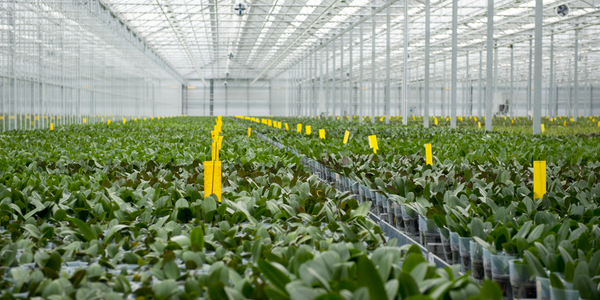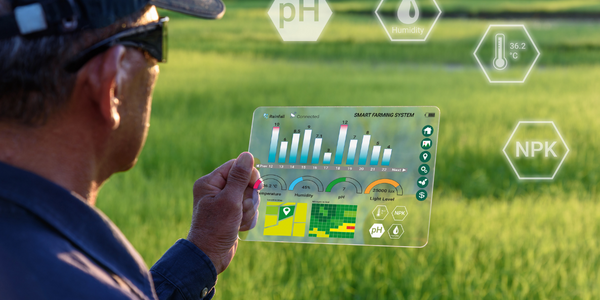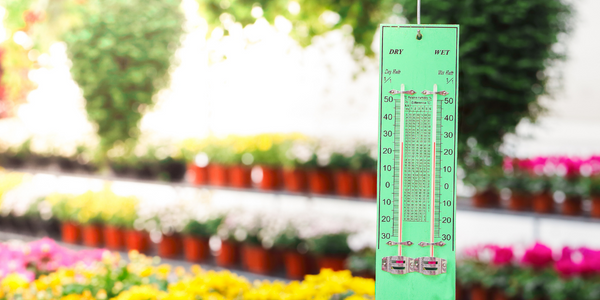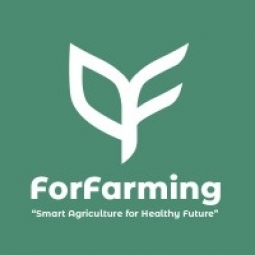Technology Category
- Sensors - Environmental Sensors
- Sensors - Utility Meters
Applicable Industries
- Agriculture
- Electrical Grids
Applicable Functions
- Facility Management
Use Cases
- Farm Monitoring & Precision Farming
- Smart Irrigation
Services
- System Integration
About The Customer
TainoLeaf is a small-scale indoor farm company that utilizes various systems for irrigation, fertigation, lighting, and climate control. The company was facing challenges with high operational costs and yield losses due to the lack of automation in their farming operations. Their systems, including lighting, irrigation, and HVAC equipment, were manually operated, leading to inefficiencies and excessive electricity usage. The company also had to manually measure pH and EC levels for nutrient dosing and fertilizing, adding to the time and effort required for their daily operations.
The Challenge
TainoLeaf, a small-scale indoor farm company, was grappling with high input and energy costs due to the lack of automation in their farming operations. Their farming systems, including lighting, irrigation, and HVAC equipment, were manually operated, leading to inefficiencies and excessive electricity usage. The company had to set timers for lighting and irrigation daily, and their HVAC systems ran continuously, regardless of the actual need. This lack of automation also affected their nutrient dosing and fertilizing processes, which were done manually based on daily pH and EC level measurements. The result was a time-consuming and costly operation, characterized by inefficient electricity and nutrient usage, and occasional yield losses due to the inability to constantly monitor and adjust the systems.
The Solution
Farmio, an automation system, was introduced to TainoLeaf's indoor farming operations. The system was integrated with TainoLeaf’s existing timers, lights, HVAC equipment, and other sensors, providing a single interface for monitoring and control. Farmio continuously collected data on relative humidity, ambient temperature, and other factors from multiple points in the facility, providing a comprehensive view of the indoor climate. The system automatically adjusted ventilation, heating/cooling, and humidification/dehumidification to maintain optimal indoor conditions. This meant that ventilators and air conditioners only operated when necessary. Farmio also automated the lighting and irrigation schedules for each plantation unit, ensuring that crops received light and water at the right times and for the right durations. Additionally, Farmio constantly measured the EC and pH levels, calculating and adding the required amount of nutrients and acid solution into the irrigation tank in real-time.
Operational Impact
Quantitative Benefit

Case Study missing?
Start adding your own!
Register with your work email and create a new case study profile for your business.
Related Case Studies.

Case Study
Intelligent Farming with ThingWorx Analytics
Z Farms was facing three challenges: costly irrigation systems with water as a limited resource, narrow optimal ranges of soil moisture for growth with difficult maintenance and farm operators could not simply turn on irrigation systems like a faucet.

Case Study
Greenhouse Intelligent Monitoring and Control Solution
Farming Orchids is the most successful form of precision farming in Taiwan, and also the most exported flower. Orchids need a specific temperature and humidity conditions to grow and bloom, and its flowering time may not be in line with market demands, so the price collapses when there is overproduction. Therefore, some farmers began to import automated greenhouse control systems for breeding and forcing, which not only improves quality, but also effectively controls the production period and yield to ensure revenue. In 2012, an orchid farmer built a Forcing Greenhouse of about 200 pings (approximately 661 Square Meters) in Tainan, Taiwan. The system integrator adopted Advantech’s APAX-5000 series programmable automation controllers to build the control platform, coupled with Advantech WebAccess HMI/SCADA software, to achieve cloud monitoring. The staff of the orchid field can monitor important data anytime via smart phone, iPad, and other handheld devices, and control the growth and flowering conditions. System requirements: In the past, most environmental control systems of orchid greenhouses in Taiwan used PLCs (Programmable Logic Controller) with poorscalability and control, and could not be connected to the Internet formonitoring from the cloud. For advanced database analysis and networking capability, the PC platform must be adopted. Therefore, PAC Systems (Programmable Automation Controller) with both PLC programming capabilities andPC functions is a better choice.The environmental control of the Orchid greenhouse switches on and off devices like fan, shade net, cooling/heat pump, liquid flow control, water-cooling wall etc. It is controlled by a control panel of electric controllers, and is driven by a motor, to adjust the greenhouse temperature, humidity, and other environmental conditions to the set parameters.

Case Study
Enabling Internet of Things Innovation in Agriculture
DigiBale, wanted to apply technology know-how and IP from implementations successfully to more agriculture sectors including cotton, forestry, sugarcane and cattle. However, farmers and growers still have worries about the connected technology.

Case Study
Precision beekeeping with wireless temperature monitoring
Honeybees are insects of large economic value and provide a vital service to agriculture by pollinating a variety of crops. In addition, bees provide us with valuable products such as honey, beeswax, propolis, bee venom, etc. Monitoring of honeybee colony health, population, productivity, and environmental conditions affecting the colony health have always been exceedingly difficult tasks in apiculture. Research has shown that even small deviations (by more than 2°C) from the optimal temperatures have a significant influence on the development of the brood and the health of adult bees.





